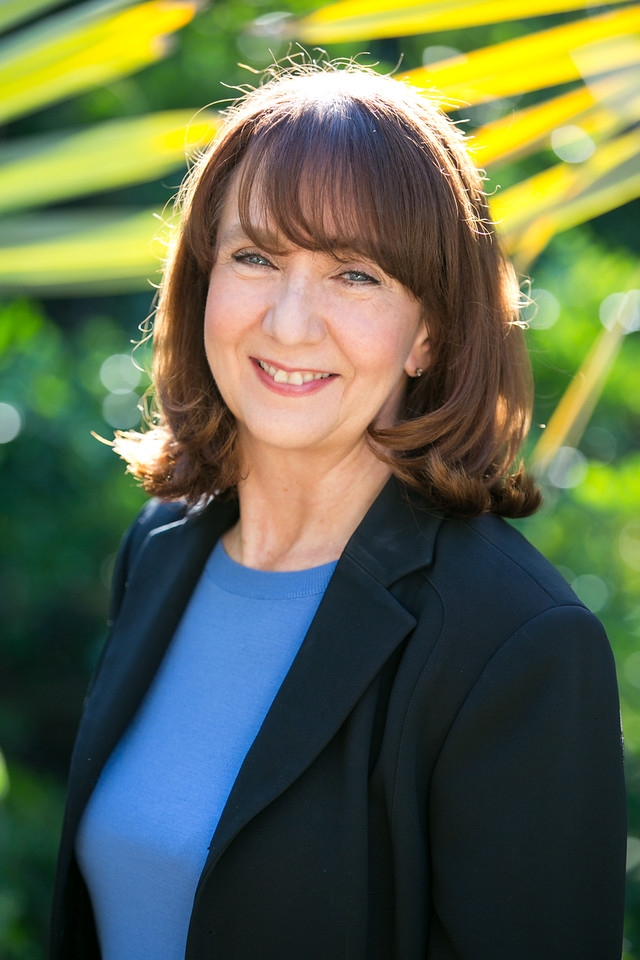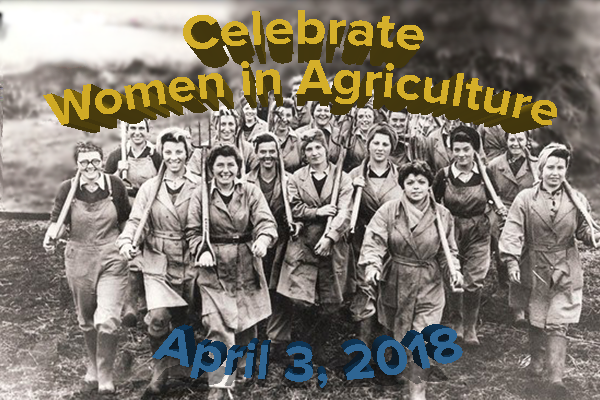Posts Tagged: gardens
From Out of the Blue Pops the Anthophora
From out the blue. And sometimes it's too good to be true. We were visiting the Sunset Gardens at the Sonoma (Calif.) Cornerstone on...
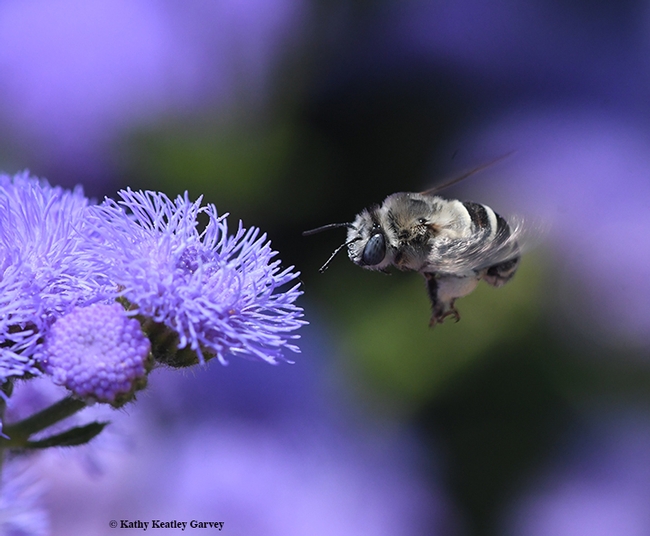
First of four images: A digger bee, Anthophora urbana, heads for a Ageratum houstonianum 'Blue Horizon' at the Sunset Gardens, Sonoma Cornerstone. (Photo by Kathy Keatley Garvey)
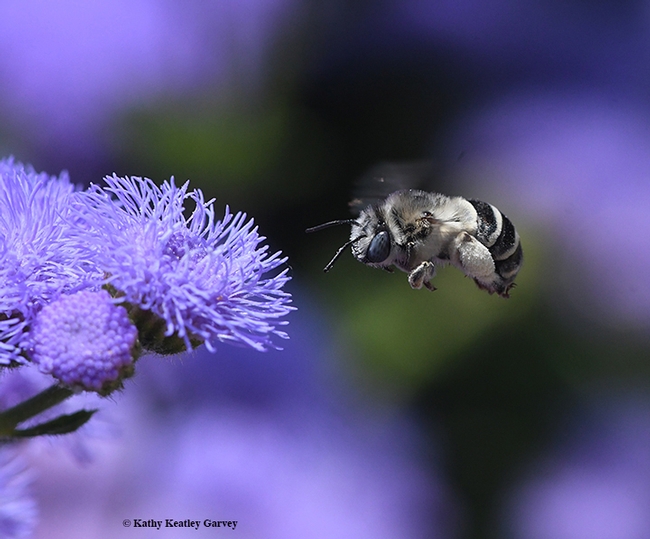
Second of four images: A digger bee, Anthophora urbana, heads for a Ageratum houstonianum 'Blue Horizon' at the Sunset Gardens, Sonoma Cornerstone. (Photo by Kathy Keatley Garvey)
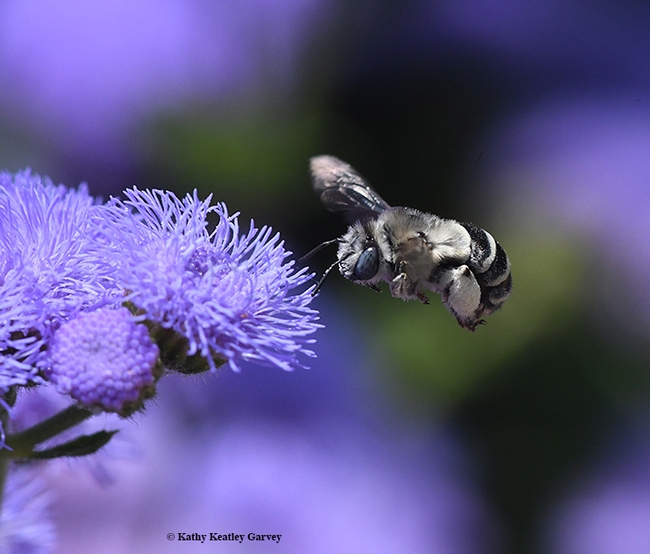
Third of four images: A digger bee, Anthophora urbana, heads for a Ageratum houstonianum 'Blue Horizon' at the Sunset Gardens, Sonoma Cornerstone. (Photo by Kathy Keatley Garvey)
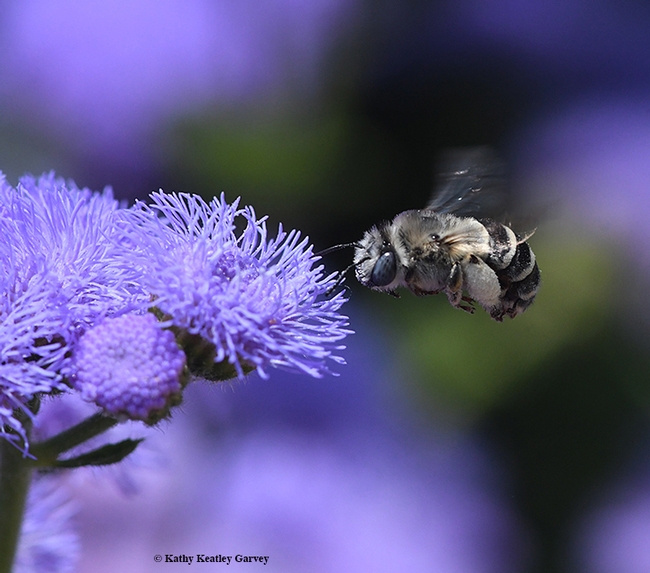
Fourth of four images: A digger bee, Anthophora urbana, heads for a Ageratum houstonianum 'Blue Horizon' at the Sunset Gardens, Sonoma Cornerstone. (Photo by Kathy Keatley Garvey)
This BOG in the Heart of UC Davis Is a Treasure
"A bog is a wetland that accumulates peat, a deposit of dead plant material—often mosses, and in a majority of cases, sphagnum...
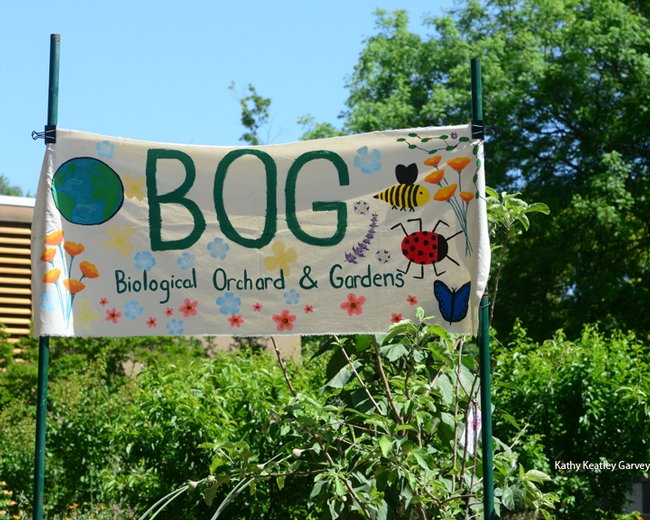
The Biological Orchard and Gardens (BOG) sign features floral and insect designs. It's located by the Mann Laboratory, UC Davis campus. (Photo by Kathy Keatley Garvey)
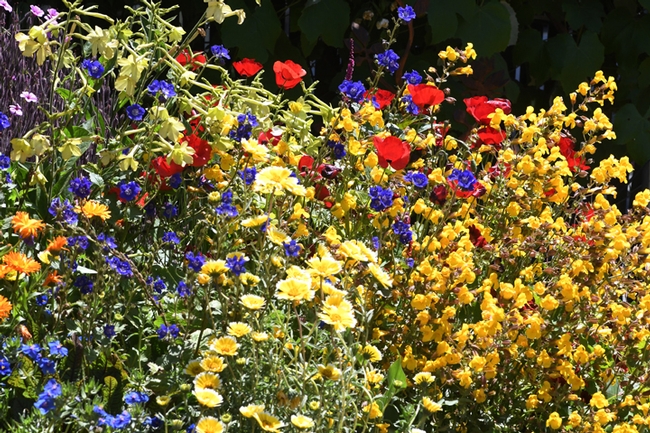
Colorful BOG garden in the early spring: among the flowers are tidy tips, desert bell, and European red flax. (Photo by Kathy Keatley Garvey)
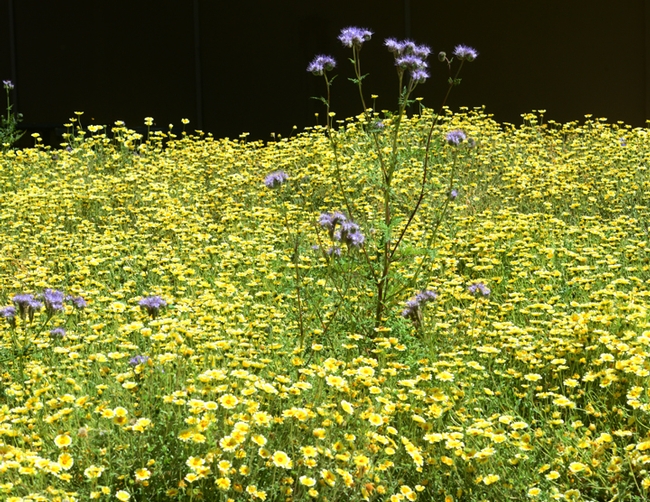
A mini-meadow of tidy tips, Layia platyglossa, with tall phacelia, Phacelia tanacetifolia. (Photo by Kathy Keatley Garvey)
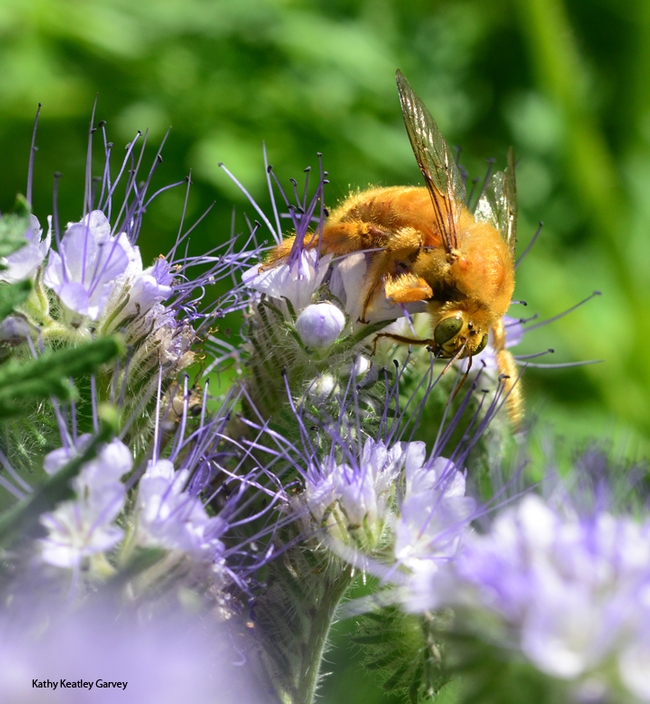
A male Valley carpenter bee, (Xylocopa varipuncta) forages on phacelia. (Photo by Kathy Keatley Garvey)
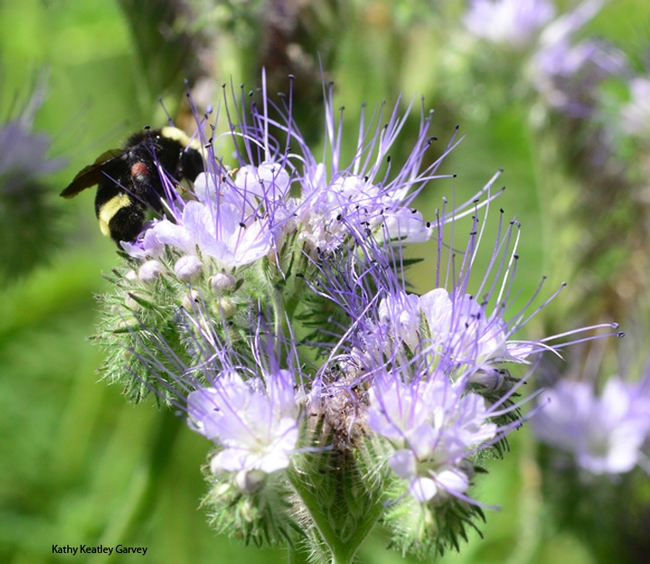
A yellow-faced bumble bee (Bombus vosnesenskii) sips nectar from phacelia. (Photo by Kathy Keatley Garvey)
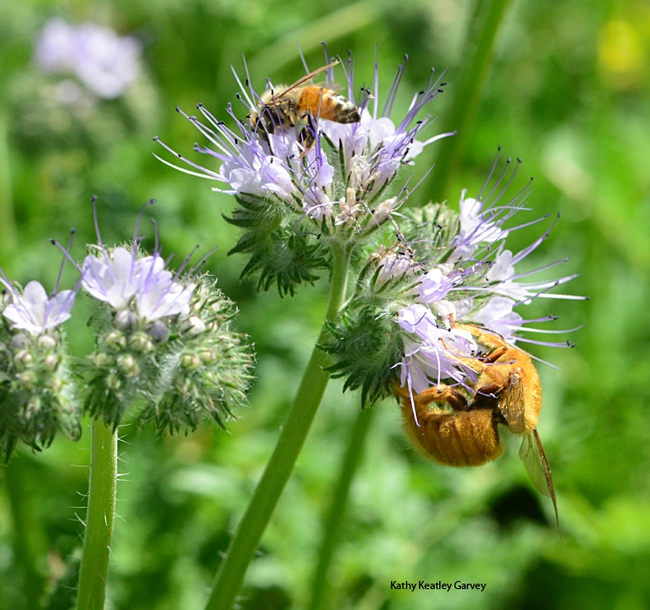
Size comparison! A honey bee is dwarfed by a male Valley carpenter bee, Xylocopa varipuncta. (Photo by Kathy Keatley Garvey)
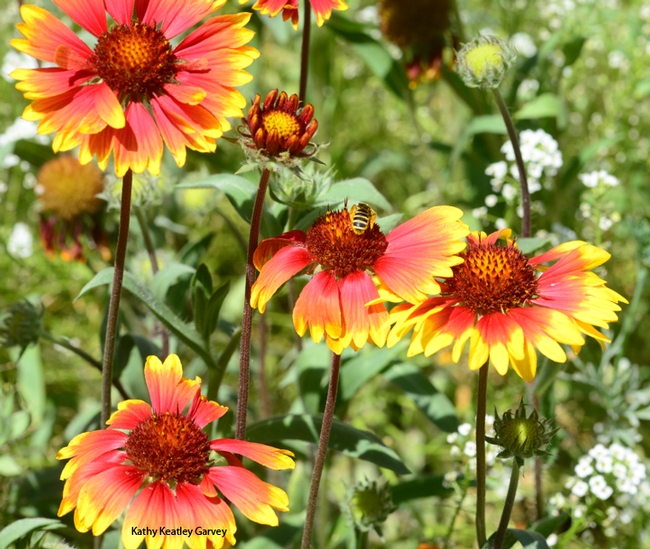
Many species of bees--as well as butterflies and other insects--are drawn to the blanketflower, Gaillardia. (Photo by Kathy Keatley Garvey)
It's Pollinator Discovery Day Sunday at UC Davis
Meet the pollinators, And meet the UC Davis researchers, UC Master Gardeners, students and community members who study them or promote them. That's...
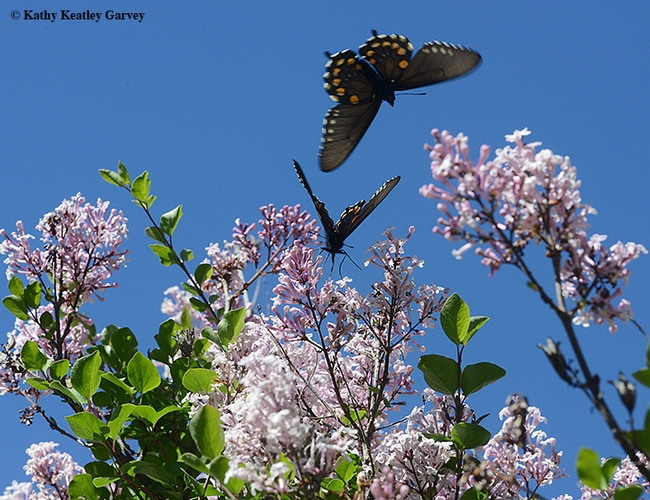
Pipevine swallowtails at the UC Davis Arboretum. (Photo by Kathy Keatley Garvey)
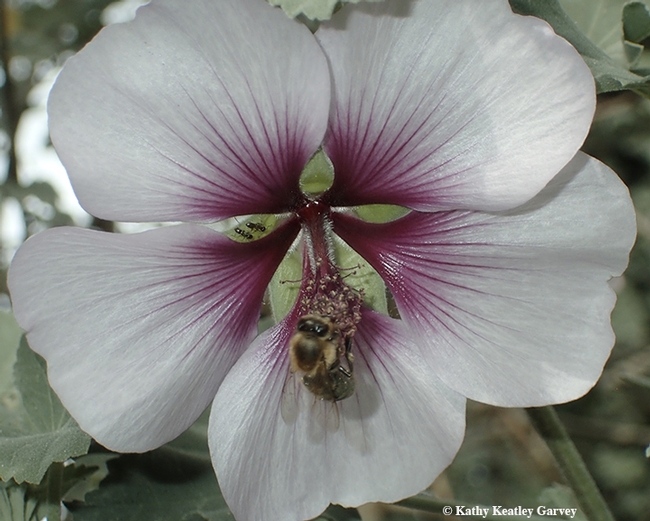
A honey bee foraging in mallow at the UC Davis Arboretum. (Photo by Kathy Keatley Garvey)
Kate Frey: Bee Gardens Make Us Happy
Whether you plant them, nurture them, or walk through them, bee gardens make us happy. That's what world-class pollinator garden designer,...
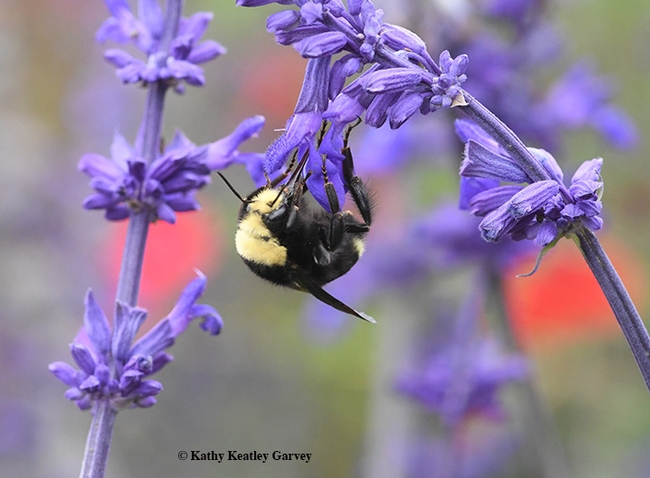
A yellow-faced bumble bee, Bombus vosnesenskii, on Salvia "Indigo Spires" in Kate Frey's pollinator garden at the Sonoma Cornerstone. (Photo by Kathy Keatley Garvey)
UCCE advisor Rachel Surls receives 2018 Bradford Rominger Agricultural Sustainability Leadership Award
The Agricultural Sustainability Institute at UC Davis has announced that Rachel Surls, UC Cooperative Extension sustainable food systems advisor for Los Angeles County, is this year's recipient of the Eric Bradford and Charlie Rominger Agricultural Sustainability Leadership Award.

The Bradford Rominger award, given yearly, honors individuals who exhibit the leadership, work ethic and integrity epitomized by the late Eric Bradford, a livestock geneticist who gave 50 years of service to UC Davis, and the late Charlie Rominger, a fifth-generation Yolo County farmer and land preservationist.
“In her three decade career with UCCE, Rachel has developed a strong program addressing some of our most critical issues in sustainable agriculture,” says Keith Nathaniel, the Los Angeles County Cooperative Extension director. “She does so with innovative strategies, working with all aspects of the LA community. After 30 years doing this work, she continues to be active in the community she serves.”
In Surls' career, gardening has been a tool to build science literacy for school children, to increase self-sufficiency for communities impacted by economic downturn, and to create small businesses for urban entrepreneurs. As the interest in and support for urban agriculture has grown, she has been in the heart of Los Angeles, ready to respond to the needs of the city's farmers and gardeners.
Her role at Cooperative Extension started as a job to help start school gardens in LA. “I would drive to any school that wanted me and help them dig in the gardens,” Surl said. “I could find teachers who were interested in starting gardens, but I couldn't find principals and administrators to support it.”
Early on, some counseled Surls to find an area of expertise that was more serious than community and school gardens. Despite the criticism, “I just chugged along, doing what I knew was good and what I cared about,” Surl said.
And over time, the value of these programs has become more apparent, and support for them has grown. Surls continued along, working to start community gardens at public housing facilities, and overseeing the Los Angeles County UC Master Gardener program.
In 1997, she stepped into a role as the UC Cooperative Extension county director, ensuring the success of extension efforts for all of Los Angeles County for the next 14 years.
In 2008 came the great recession, and with it an uptick in public interest in home grown food.
“We were getting more and more calls in our office on how to be more self-sufficient,” Surls said. “The economics of the time rattled people, so they were thinking more about how to grow their own food, and how to maybe make some money by selling what they grow. And people needed the support and guidance to do that.”
Surls and her partners are working to meet that need through workshops in California's largest metropolitan areas and a website of resources to help new urban farmers get a leg up on farming in the city. Surls is also a member of the leadership board for the Los Angeles Food Policy Council.
The energy around urban agriculture today is palpable. And a career path that was once not taken seriously now is.
“That has really changed in our institution and culture,” Surl said. “We're hiring people to do this work!”
Persistent and focused, Surls' work is one of the reasons that progress is happening.
Surls will receive the award at the Celebrating Women in Agriculture event in Davis April 3. The event is free and open to the public. Learn more about the event here.


